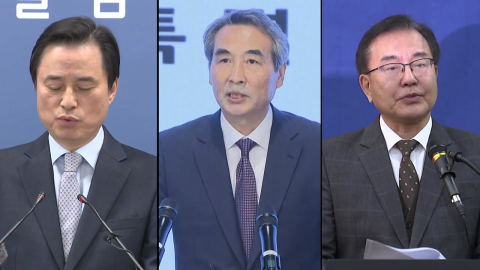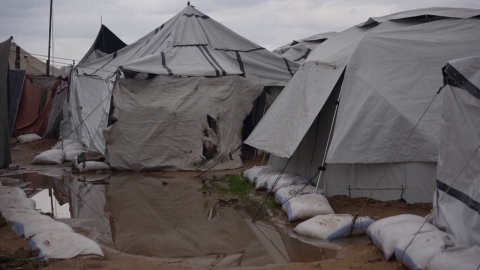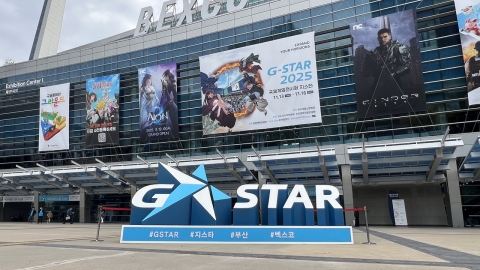-
이 대통령 "’하나의 중국’ 존중…한중 정상 매년 만나야"재생

-
중국 국빈 방문을 앞둔 이재명 대통령이 타이완 문제와 관련해 ’하나의 중국’을 존중한다고 밝혔습니다. 이 대통령은 한중 관계가 매우 중요한 만큼 양국 정상이 1년에 한 번은 만나서 대화해야 한다고 강조했습니다. 이경아 기자가 보도합니다. [기자] 오는 4일부터 중국을 국빈방문하는 이재명 대통령이 중국 중앙TV와 대담했습니다. 이 자리에서 이 대통령은 중국의 최대 현안인 타이완 문제에 대해 ’하나의 중국’을 존중한다는 입장에 변함이 없다고 말했습니다. 중국 본토와 타이완, 홍콩, 마카오는 한 국가이며, 합법적 정부 역시 하나뿐이라는 중국 입장을 한국 정부는 1992년 수교 이후 지지해 왔습니다. 이 대통령은 또 지금의 국제정세 속에 양국 관계의 중요성을 강조했습니다. [이재명 / 대통령 : 최근에 국제정세가 매우 불안정하고 국가 간 갈등도 격화되고 있는데 한국과 중국과의 관계는 우리 입장에서는 매우 중요합니다. 한국과 중국은 역사적으로도 또 경제적으로도 지정학적으로도 정치적으로도 안보적으로도 매우 중요한 현안들을 가지고 있고…] 과거 ’안보는 미국, 경제는 중국’이란 논리가 있었지만, 대한민국의 전략적 자율성이 매우 중요하다는 인식도 드러냈습니다. 이 대통령은 "미국과의 안보 협력은 피할 수 없지만 중국과 충돌하는 것은 국익에 전혀 도움이 되지 않을 것"이라고 밝혔습니다. 따라서 양국이 최대한 서로에게 이익이 되는 것을 치열하게 찾아야 한다며, 1년에 한 번은 한중 정상이 만나 대화해야 한다고 강조했습니다. 인공지능 등 첨단 산업과 재생에너지 분야에서 협력을 기대한다고 밝힌 이 대통령은 양국 관계의 새로운 도약을 이루겠다는 의지도 드러냈습니다. [이재명 / 대통령 : 이번 방중을 통해서 그간에 있었던 오해들, 또는 갈등적 요소를 최소화 또는 없애고 한중 관계가 새로운 단계로 도약하고 발전해서 한국과 중국이 서로의 발전에 도움이 되는 관계로 확실하게 자리매김하게 하는 것이 목표라고 할 수 있겠습니다.] 지난해 11월 경주에서 처음 만난 시진핑 중국 국가주석에 대해 이 대통령은 "뛰어나고 시야가 넓은 지도자"라고 밝혔습니다. 당시 중국산 휴대전화에 대한 농담을 호쾌하게 받아줬다며 한국 국민이 시 주석의 인품에 대해 좋은 생각을 갖게 됐다고 추억을 떠올렸습니다. YTN 이경아입니다. 영상편집 : 양영운 ※ ’당신의 제보가 뉴스가 됩니다’ [카카오톡] YTN 검색해 채널 추가 [전화] 02-398-8585 [메일] social@ytn.co.kr
-
퇴근길 종각역 인근 추돌 사고…1명 사망·9명 부상재생

-
어제(2일) 오후 퇴근 시간 무렵, 서울 종각역 인근에서 차량이 잇따라 추돌하는 사고가 났습니다. 처음 앞차를 추돌한 택시가 보행자를 덮치면서, 1명이 숨지고 9명이 다쳤습니다. 임성재 기자의 보도입니다. [기자] 흰색 SUV 택시 전면부가 형체를 알아볼 수 없을 정도로 찌그러졌습니다. 주변 길가에는 차량에서 떨어져 나온 부품이 널브러져 있습니다. 오후 6시 5분쯤 서울 종각역 인근에서 70대 A 씨가 몰던 전기차 택시가 앞서 가던 승용차를 들이받았습니다. 이후 신호등 기둥과 충돌한 뒤 또 다른 승용차와 부딪혔습니다. [사고 현장 목격자 : 사고 소리 ’쿵’, ’쾅’하는 박살 나는 소리가 워낙 커서요.(사고 차량에서) 흰 연기가 계속 나왔기 때문에 소방 관계자들이 불을 끄고…. ] 이 사고로 택시 기사 A 씨와 승객 3명, 그리고 길에 있던 보행자 6명 등 10명이 크고 작은 부상을 입었습니다. 이 가운데에는 인도네시아와 인도 국적의 외국인 4명도 포함됐습니다. 부상자 중 크게 다친 40대 한국인 여성은, 심폐소생술을 받으며 병원으로 옮겨졌지만, 끝내 숨졌습니다. [이종식 / 서울 종로소방서 현장대응단장 : 보행자 6명이 다쳤는데요, (1명은) CPR로 병원 이송했고, 보행자인 거로 알고 있습니다.] 경찰의 음주 측정 결과, A 씨가 술을 마시고 운전을 한 건 아닌 거로 파악됐습니다. 약물 복용 여부에 대해선 추가 조사가 이뤄질 거로 보입니다. 경찰은 A 씨에 대한 치료 경과를 보며 정확한 사고 경위를 조사할 방침입니다. YTN 임성재입니다. 촬영기자 : 윤소정 영상편집 : 신홍 ※ ’당신의 제보가 뉴스가 됩니다’ [카카오톡] YTN 검색해 채널 추가 [전화] 02-398-8585 [메일] social@ytn.co.kr
-
10월부터 사라지는 검찰…아직 많은 부분 '빈칸'재생

-
새해 법조계의 가장 큰 변화는 오는 10월 검찰청 78년 영욕의 역사가 막을 내린다는 것입니다. 다만, 구체적인 개혁안은 아직 완성되지 않아, 많은 논의가 필요할 것으로 전망됩니다. 이준엽 기자가 보도합니다. [기자] 개정된 정부조직법이 지난해 통과되면서, 올해 10월 2일 검찰청 폐지는 확정됐습니다. [우 원 식 / 국회의장 (지난해 9월) : 정부조직법 일부 개정법률안 대안에 대한 수정안은 가결되었음을 선포합니다.] 법무부 산하에 있던 검찰청이, 법무부 장관 소속의 공소청과 행정안전부 장관 소속 중대범죄수사청으로 나뉘게 됩니다. 여권의 숙원이었던 수사와 기소의 분리가 현실화되는 건데, 아직 큰 틀만 확정됐을 뿐입니다. 공소청이나 중수청 모두 구체적인 내용은 법률로 따로 정하도록 해두었기 때문입니다. 이를테면 공소청에 보완수사권만큼은 남겨둘지를 비롯해 사법체계 전반을 재설계하는 일이나, 각 조직의 배치는 어떻게 할지 등이 모두 '빈칸'으로 남아있습니다. [이 재 명 / 대통령 (지난해 9월) : 죄를 지은 사람이 처벌받지 않고 큰소리 떵떵 치게 방치하는 것도 그것도 또 문제에요. 아주 치밀한 장치가 필요하다. 아주 세밀한 검토, 논쟁, 그 다음에 장치들.] 후속 논의를 맡은 범정부 TF인 검찰개혁추진단 어깨가 무거운 가운데, 검찰 내부 설문 조사 결과, 중수청 근무 의사가 있다고 답한 검사 비율은 0.8%에 불과할 정도로 거부감이 상당한 상황입니다. 공소청에서 일하겠다는 검사도 77%로, 대규모 전보와 퇴직이 불가피하다는 전망도 나옵니다. 쪼개진 두 기관이 검찰의 기존 역량을 제대로 이어받을 수 있을지에 대한 우려가 나오는 상황인데, 수사·기소의 지연이나 혼란 등 법조계에서 지적해온 숙제도 산적했습니다. 세부 설계의 중요성을 염두에 두고, 검찰개혁의 마지막 단계를 빈틈없이 마무리해야 한다는 지적이 나오는 이유입니다. YTN 이준엽입니다. 영상기자 : 최성훈 영상편집 : 이자은 디자인 : 지경윤 ※ '당신의 제보가 뉴스가 됩니다' [카카오톡] YTN 검색해 채널 추가 [전화] 02-398-8585 [메일] social@ytn.co.kr





























